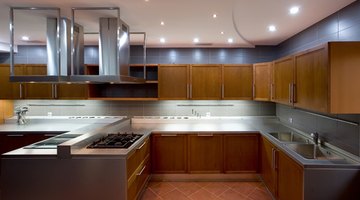Is There a Waterproof Rubber Baseboard Molding?
Rubber is making its way into many of today's home flooring improvement products, including carpet padding, flooring tile and waterproof baseboard molding. Rubber molding, or vinyl cove molding, is ideal for use in any room prone to water exposure.

Function
Rubber molding is used to conceal the gap between the flooring and the wall covering. Rubber base molding is very customizable and comes in a variety of colors that blend with most interiors.
Benefits
Rubber molding is waterproof, making it resistant to rot and fungus growth. Unlike wood molding, it is also impervious to dents, scratches, scuff marks and stains.
Applications
Because of its easy maintenance, rubber baseboard molding is used frequently in commercial applications like restaurants, factories, schools and hospitals. Homeowners use it frequently in bathrooms, kitchens, wash rooms and basements.
Installation Method
To install rubber baseboard molding, measure the perimeter of the room and add a few feet to account for error. Remove the adhesive strip from the back of the molding or apply a layer of mastic to the back of the rubber. Do not apply too much adhesive since it will ooze onto the wall and floor as you install. Cut the strip at the next interior corner. Repeat the adhesive process, press a new piece of molding into the corner, and continue. Simply wrap the molding around exterior corners. Clean any adhesive with an appropriate solvent and clean towel.
References
Resources
Photo Credits
- Kitchen image by armanxo from Fotolia.com
- Kitchen image by armanxo from Fotolia.com
More Articles



